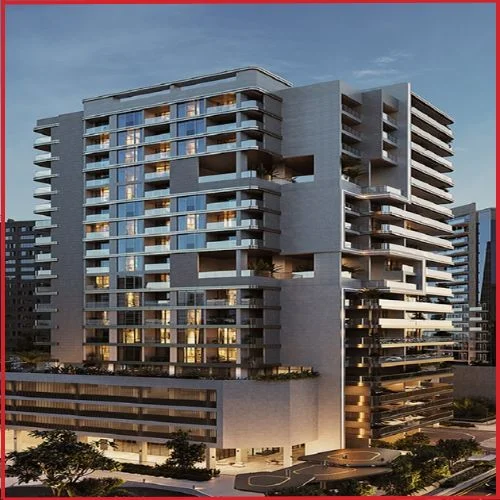As of the December quarter of FY24, 59 new hotels with a combined 4,669 rooms entered the market, giving the hotel sector its greatest brand penetration rate in the past ten years at 52%.
In 2023, hotels experienced the most supply creation, with 14,000 rooms added across 182 hotels, pushing the aggregate chain-affiliated room supply to approximately 183,000 rooms, stated Atul Thakkar, Director of Investment Banking, Anand Rathi Advisors Ltd.
10,800 newly constructed hotel rooms, 2,600 rooms gained via the conversion of standalone hotels, and 600 rooms gained through the expansion of already-existing hotels made up the new room supply during the previous year.
“The positive sentiment in the industry is reflected by a growing pipeline of hotel rooms, estimated at 67,000 additional rooms to open by 2027,” Thakkar stated. There are now about 183,000 branded hotel rooms in India, and in the next three years, that number is expected to rise to 250,000.
With 82 hotels under development, Indian Hotels Company Ltd. (IHCL) plans to build 11,000 rooms between FY24 and FY26.
The management of IHCL announced intentions to open four more hotels in Q4 FY24 during the Q3 FY24 earnings call. Two hotels will be opened in Ayodhya, one in the next 12 months and the other in the next 20. For the next three years, the management intends to keep opening two hotels on average each month.
Eight new hotels were opened by the corporation in the December quarter, up from three in the second quarter and five in the first quarter of FY24. The firm is planning two new brand launches for Tier II and III cities shortly. Analysts pointed out that IHCL may grow even further with the addition of two additional full-service brands for Tier II and III cities at a pricing range below Rs 10,000.
The 301-key Hyatt Regency Pune hotel is set to undergo renovations and rebranding into a premium brand hotel operated by Hyatt as part of Samhi Hotels’ expansion plan. This project is expected to be finished by September 30, 2025. In Rajarhat, Kolkata, West Bengal, the hotel brand is also building a 111-key Holiday Inn Express, which is scheduled to open by September 30, 2024. With 95 hotels and 8,760 rooms in its portfolio, Lemon Tree Hotels intends to add 52 more hotels and 4,092 rooms to its current offering. In the upcoming years, Chalet Hotels hopes to add 5,000 rooms, and they are also concentrating on expanding their inventory.
Growth is anticipated at Lemon Tree’s recently opened Aurika, a Mumbai Skycity, which opened in October. Expectations are that occupancy will rise from 40% in the third quarter to 60% in the following quarter. Santosh Sinha, an analyst at trading company Emkay Global, stated that this will be further boosted by the Miss World event, which will see the occupancy of 100 rooms for 14 days.
The management of the hotel chain reported that the Aurika filled up rapidly, even though there was a sluggish time and a significant inventory of about 700 rooms.
Although there is now a supply gap that is driving expansion in the hospitality industry, there are worries that fewer foreign tourists (FTAs) would mean a decline in demand for branded hotels.
International tourists are regarded as a significant source of business for well-known hotels. FTA arrivals in India in 2022 will still be less than in 2019 (10 million), at 6.19 million.
However, even if more domestic travelers are visiting, which has helped the hospitality sector flourish, they are less likely to choose branded lodgings. The hospitality consultancy firm Horwath HTL Consultants estimates that just 2 percent of Indian visitors choose hotels that are a member of the organized sector. Domestic travelers like cheaper hotels and a greater number of homestays.
Lower demand in key markets is another difficulty for certain hotel operators. Bengaluru, Gurugram, Hyderabad, and Pune have lower occupancy than before the COVID-19 pandemic.
The management of Lemon Tree Hotels stated that around one-third of its inventory is underperforming and is below the pre-COVID level, particularly in the Bengaluru and Pune regions. Their increased reliance on the IT industry, which is facing layoffs, is the cause of this.
Recuperation and expansion
According to Kevin Shah, an analyst at Emkay Global, hotel chains would see a rise in income due to a rebound in demand in Bengaluru, Pune, and Hyderabad, which is being driven by the IT industry.
ADR (average daily rate), which measures how much a hotel makes for an occupied room, drove robust growth in Bengaluru, Chennai, Delhi, Goa, Hyderabad, and Mumbai, offsetting the impact of lower occupancy in some markets. These markets saw sustained demand from business travelers.
Branded hotel ADR per room climbed to Rs 7,479 from Rs 6,135 in 2022, a 21.9 percent rise from the previous year. At Rs 5,684, ADR saw a 31.5 percent increase from 2020.
With 63.6 percent occupancy, branded hotel occupancy is slightly below the 2020 objective of 64.5 percent.
Regarding FTAs, Thakkar stated that although the influx is still below pre-COVID levels, foreign visitors to India between January and November 2023 were 17% higher than in the same period the year before, indicating possible future demand for hotels.
According to him, the majority of the top-name hotels had double-digit revenue increases in Q3 due to a combination of factors including strong local demand, a rebound in foreign visitor arrivals, and significant international events like cricket’s World Cup and India’s G20 leadership.
According to IHCL, the Indian Premier League (IPL), which is anticipated to begin at the end of March, would likely increase the pace of demand even further.
Thakkar is relying on the temple towns’ expanding hotel industry.
“Since 2019, the amount and usage of chain-affiliated products at pilgrimage sites has increased twofold. The availability of higher-quality hotel choices has made it possible for travelers to abandon subpar independent hotels and other pilgrim accommodations. Over 100 hotels spread across many pilgrimage sites saw an increase in revenue per available room (RevPAR) of 38.5 percent to Rs 3,200 since 2019,” the speaker reported.















